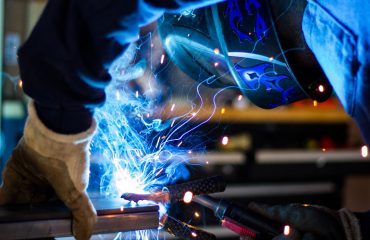body {
font-family: sans-serif;
line-height: 1.6;
margin: 20px;
}
h1, h2, h3 {
color: #333;
}
h1 {
font-size: 2.5em;
}
h2 {
font-size: 2em;
}
h3 {
font-size: 1.5em;
}
The world of steel is undergoing a significant transformation, thanks to the advent of nanotechnology. Nanomaterials and their application in surface treatments are revolutionizing the properties of steel, leading to enhanced performance, durability, and longevity across a wide range of industries. This post delves into the exciting world of nanotech in steel surface treatments, exploring its various applications and the future it promises.
Enhanced Corrosion Resistance through Nanocoatings
Corrosion is a significant concern for steel structures, leading to costly repairs and replacements. Traditional methods of corrosion protection often fall short in harsh environments. Nanotechnology offers a powerful solution. Nanocoatings, created using materials like titanium dioxide (TiO2) nanoparticles, zinc oxide (ZnO) nanoparticles, or graphene, provide a superior barrier against corrosive agents. These coatings are exceptionally thin yet incredibly effective due to their unique surface properties and ability to self-heal minor scratches. The high surface area of nanoparticles ensures complete coverage, minimizing the chances of corrosion initiation. Furthermore, some nanocoatings exhibit self-cleaning properties, further enhancing their longevity and effectiveness.
Improving Wear Resistance with Nanostructured Surfaces
In applications requiring high wear resistance, such as cutting tools, engine parts, and industrial machinery, steel’s inherent properties can be significantly improved through nanotechnology. Techniques like laser surface modification and ion implantation can create nanostructured surfaces on steel components. This process refines the grain size of the steel, leading to a significant increase in hardness and wear resistance. The reduced grain size inhibits dislocation movement, making the material more resistant to deformation and wear. Nanostructured surfaces also exhibit improved fatigue strength, extending the lifespan of components subjected to cyclical loading.
Boosting Hardness and Strength with Nanoparticle Reinforcement
The addition of nanoparticles to the steel matrix itself can enhance its mechanical properties. By incorporating nanoparticles of materials like carbon nanotubes, ceramic nanoparticles (e.g., alumina, silicon carbide), or metal carbides, the strength and hardness of the steel can be substantially increased. These nanoparticles act as reinforcement agents, hindering dislocation motion and crack propagation. This approach leads to a stronger and tougher steel, ideal for high-stress applications where durability is paramount. The precise control offered by nanotechnology allows for tailored mechanical properties, optimizing the steel for specific applications.
Advanced Surface Functionalization for Specific Applications
Nanotechnology allows for precise control over the surface chemistry of steel. This surface functionalization enables the creation of steel with tailored properties for specific applications. For example, creating a superhydrophobic surface using nanoparticles can prevent water adhesion and ice formation, making it ideal for applications in cold climates. Similarly, surface modification with nanoparticles can enhance the steel’s biocompatibility, making it suitable for biomedical implants. This level of control over surface properties opens up a wide array of possibilities, pushing the boundaries of what’s possible with steel.
The Future of Nanotech in Steel Surface Treatments
The field of nanotechnology in steel surface treatments is constantly evolving. Ongoing research focuses on developing even more efficient and cost-effective nanocoatings, exploring new nanomaterials with enhanced properties, and refining existing techniques for nanostructuring steel surfaces. The future likely holds even more significant advancements, leading to even stronger, more durable, and more versatile steel materials. The integration of artificial intelligence and machine learning in the design and optimization of nanostructured surfaces is also poised to accelerate innovation in this field. We can expect to see wider adoption of these technologies across numerous industries, driving advancements in manufacturing, construction, transportation, and many other sectors.
In conclusion, nanotechnology is revolutionizing the way we treat and utilize steel. By offering enhanced corrosion resistance, improved wear resistance, increased hardness and strength, and advanced surface functionalization, nanotech is unlocking the full potential of this essential material. The future is bright for nanotech in steel surface treatments, promising even more groundbreaking advancements in the years to come.
SEO Tags:
- Nanotechnology in Steel
- Steel Surface Treatments
- Nanocoatings for Steel
- Corrosion Resistance of Steel
- Wear Resistant Steel




